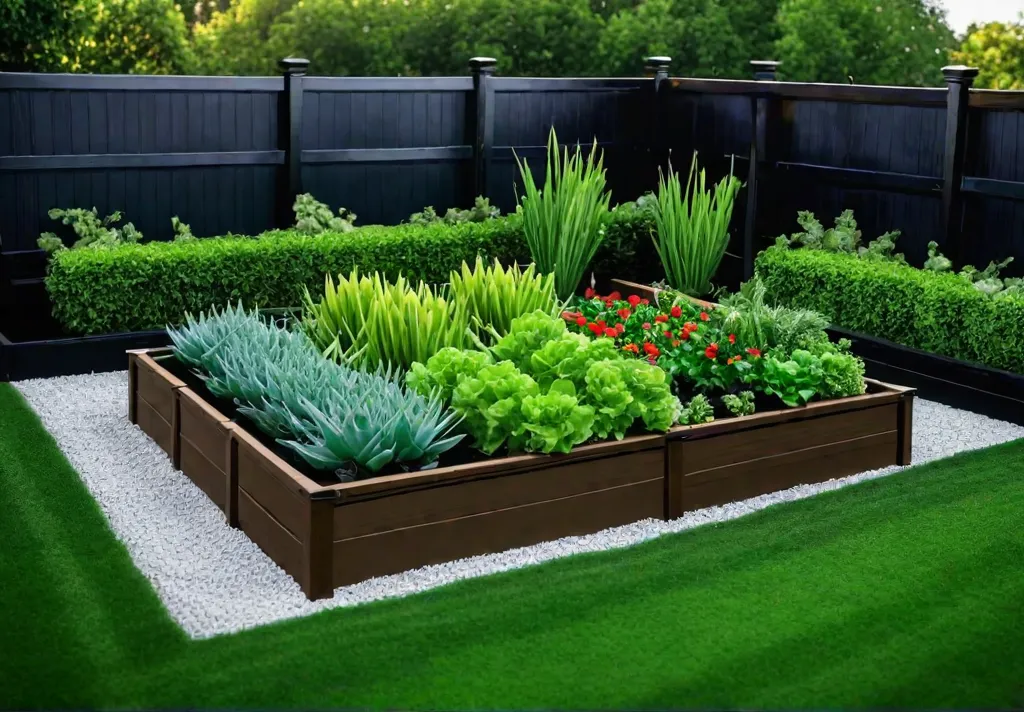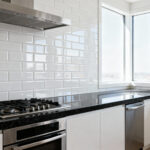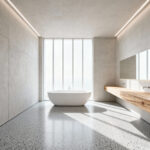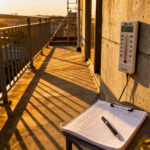Imagine strolling through your backyard, basket in hand, picking fresh, juicy tomatoes or crunchy carrots grown with two hands. Doesn’t that sound like a dream? Well, my friends, that dream can become a reality with a little planning and elbow grease. As an eco-conscious lifestyle blogger, I’m here to guide you through creating your thriving vegetable garden.
Growing your produce offers many incredible benefits. You’ll have access to the freshest, most nutritious vegetables imaginable. No more wilted greens or tasteless tomatoes from the grocery store—your homegrown goodies will be flavorful. And let’s not forget the sustainability factor. By reducing your reliance on industrialized agriculture, you’ll shrink your carbon footprint and do your part for the planet.
But the real joy comes from the process itself. There’s something so rewarding about nurturing your plants from seed to harvest and savoring the fruits (or veggies) of your labor. It’s a wonderful way to connect with nature, exercise, and enjoy a sense of accomplishment.

In this comprehensive guide, I’ll walk you through every step of planning and creating your dream vegetable garden. We’ll cover everything from selecting the perfect location to maintaining a healthy plot. So, are you ready to roll up your sleeves and get growing? Let’s dive in!
Selecting the Right Location
Choosing the ideal spot for your vegetable garden is crucial for its success. After all, plants have specific needs regarding sunlight, soil quality, and drainage. Let’s start by addressing those key factors.
First up, sunlight. Most vegetables thrive on at least 6-8 hours of direct sunlight daily. Take a good look around your yard and identify the sunniest areas. Avoid spots heavily shaded by trees or buildings, as plants won’t get the rays they need to grow strong and healthy.
Next, let’s talk soil. Good, nutrient-rich soil is the foundation of a prosperous garden. Before planting, I recommend testing your soil to see what it’s working with. Look for signs of poor quality, like compaction, poor drainage, or a lack of organic matter. If the results aren’t ideal, don’t worry – we’ll cover how to amend the soil later.
Drainage is another essential consideration. Veggies don’t like to have “wet feet,” so you’ll want to choose a location that doesn’t tend to pool water after heavy rain. Raised garden beds can be a great solution for areas with poor drainage.
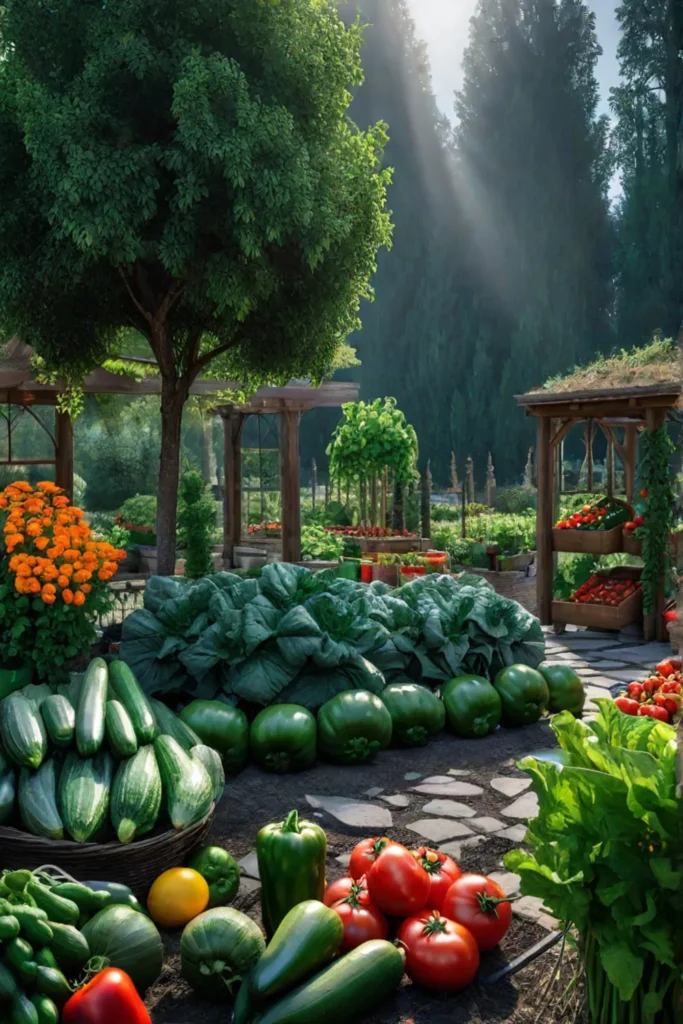
Finally, think about accessibility. You’ll spend a lot of time tending to your garden, so pick a spot that’s easy to get to and won’t require too much effort. Proximity to a water source is also a bonus.
Once you’ve found the perfect sunny, well-draining spot with decent soil, it’s time to start planning the layout of your garden. That’s where we’ll head next!
Planning Your Garden Layout
Now that you’ve selected the ideal location for your vegetable garden, it’s time to start designing the layout. This is where the fun begins! You’ll get to decide on the shape and size of your garden beds and how to arrange your plants for maximum productivity.
One of the first choices is whether to go with raised beds or an in-ground garden. Raised beds offer several advantages, like improved soil quality, better drainage, and easier access. They’re a great option if you have poor native soil or limited space. On the other hand, in-ground gardens can be more cost-effective and require less ongoing maintenance.
Regardless of which route you choose, pay close attention to the dimensions. Raised beds should be no more than 4 feet wide to reach the center from both sides easily. As for depth, aim for at least 6-8 inches to give those roots plenty of room to spread out.
Another crucial element of your garden layout is companion planting. This involves strategically pairing different vegetables together to create a symbiotic relationship. For example, planting marigolds alongside your tomatoes can help deter pests, while beans and corn work in tandem to enrich the soil. It’s a natural way to boost your garden’s health and productivity.
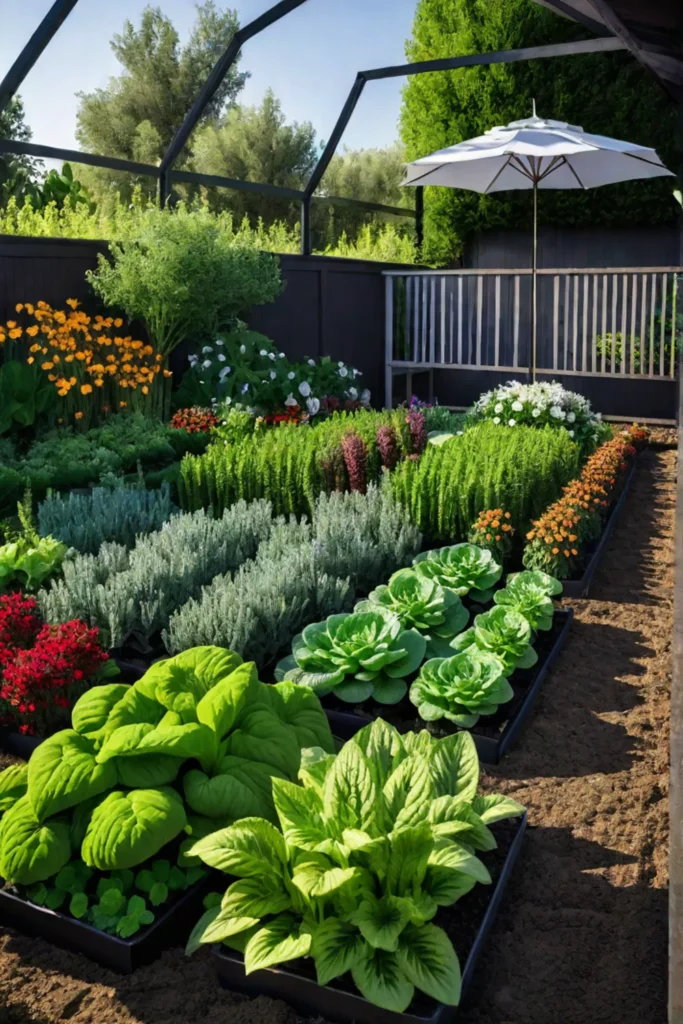
Let’s not forget about crop rotation. By switching up where you plant your veggies each season, you can prevent the buildup of diseases and pests and maintain the soil’s nutrient levels. It takes a bit of planning, but it’s well worth the effort.
Finally, remember to zone your garden based on sunlight and water needs. Group together plants that thrive in similar conditions to make your maintenance routine easy.
With a little creativity and some careful planning, you can design a vegetable garden that’s both productive and visually appealing. The possibilities are endless!
Preparing the Soil
Now that you’ve got the layout all mapped out, it’s time to focus on the foundation of your garden – the soil. Healthy, nutrient-rich soil is essential for growing thriving vegetables, so let’s ensure we get it right.
The first step is to test your soil. You can pick up an easy-to-use soil testing kit from your local garden center or order one online. These kits will help you determine your soil’s pH level, nutrient content, and overall quality. This information lets you know exactly what amendments you need to add.
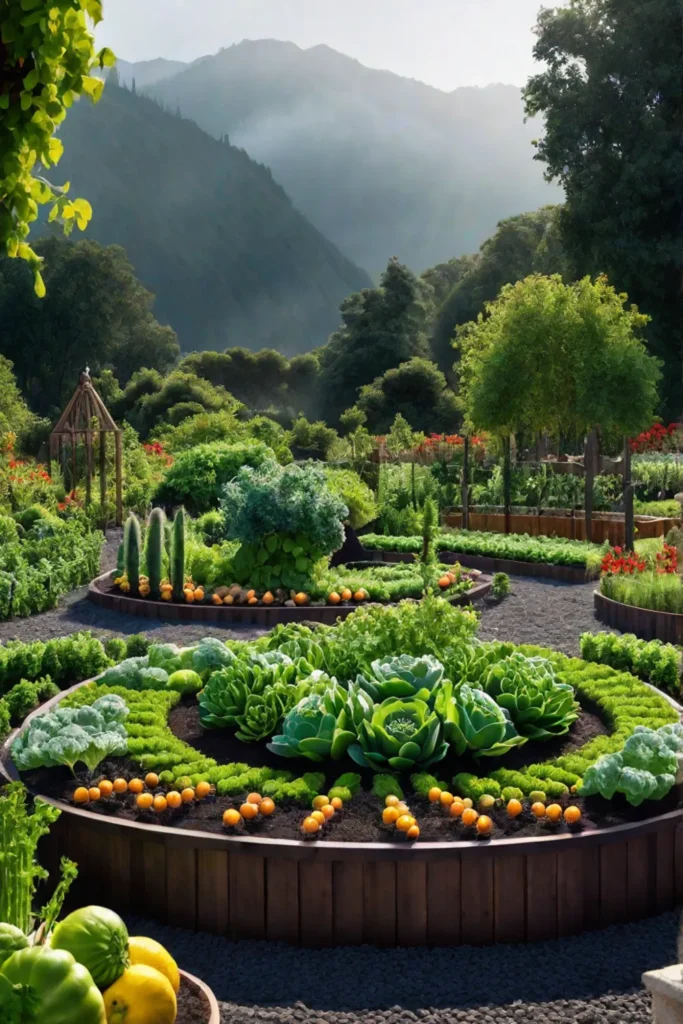
If your soil is acidic (pH below 0), you’ll want to add lime to raise the pH. Conversely, sulfur is the way to go if it’s too alkaline (above 0). GTheright balance will ensure your plants can properly absorb all the essential nutrients.
Speaking of nutrients, that’s where organic matter comes into play. Mixing in compost, aged manure, or other organic amendments will enrich the soil and improve its structure and water-holding capacity. This creates the ideal environment for robust root growth and nutrient uptake.
Now, I know what you’re thinking—where will I find all this compost and manure? Don’t worry—it’s easier than you might think! You can start your compost pile right at home using kitchen scraps and yard waste. You can also check with your local nursery or municipality to see if they offer affordable bulk options.
Once your soil amendments are ready to go, it’s time to get to work. Gently work the organic matter into the top 6-8 inches of soil, being careful not to compact it down too much. Then, water it well and let Mother Nature work her magic.
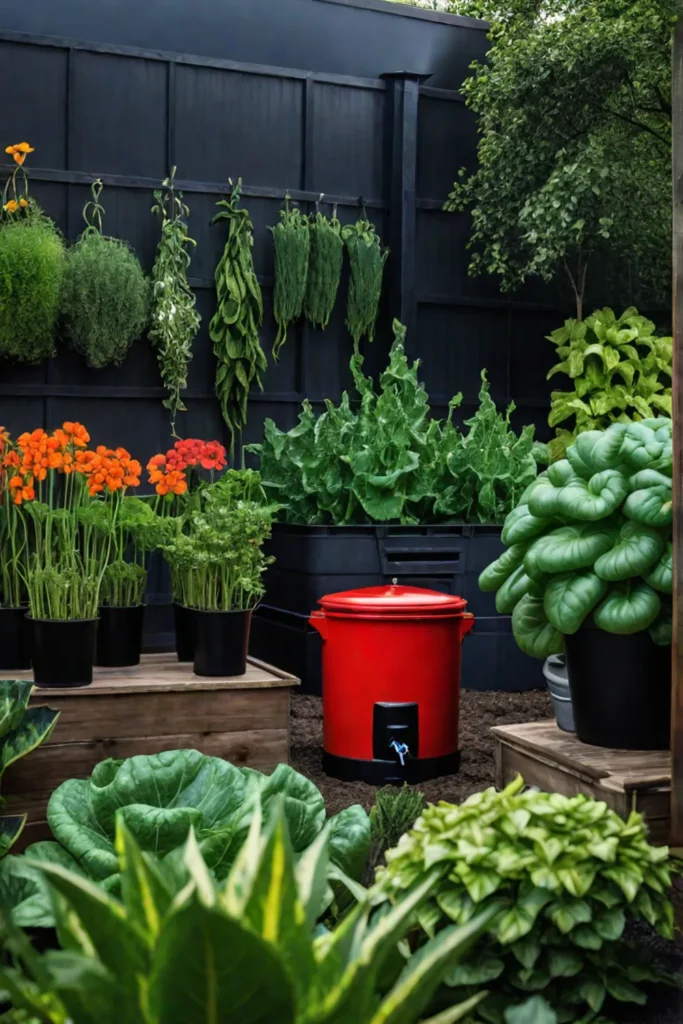
With freshly revitalized soil, you’ll be well on your way to growing the most vibrant, productive vegetable garden on the block. Let’s move on to selecting and planting your crops!
Selecting and Planting Vegetables
Now that your garden’s foundation is all setup, it’s time for the fun part—choosing which veggies to grow! This is where your creativity and personal preferences come into play.
When selecting your crops, the first thing to consider is your local climate and growing season. Are you in a warm, Mediterranean-style region or a cooler, Northern climate? Knowing your conditions will help you choose the right varieties that will thrive.

For example, warm-season crops like tomatoes, peppers, and eggplants do best when planted after the last frost, while cool-season veggies like lettuce, carrots, and radishes can be sown earlier in the spring. Pay close attention to the days-to-maturity information on your seed packets or plant tags – this will help you plan your garden accordingly.
Another important factor is plant spacing. Different vegetables have varying root systems and space requirements. Tomatoes, for instance, need about 2-3 feet between plants, while carrots only require 1-2 inches. Consulting a planting guide or doing a quick online search will ensure you give your crops the room to grow strong and healthy.
When it comes to starting your plants, you’ve got a couple of options. You can either begin with seeds sown directly in the garden or use transplants that you’ve started indoors. Each method has its advantages. Seeds are generally more cost-effective and allow for a wider variety, while transplants can give you a head start and higher yields.
If you opt for seeds, follow the planting depth and spacing instructions on the packet. When it’s time to transplant, take care to “harden off” your seedlings first by gradually exposing them to more sun and wind over a week or two. This will help them adjust to their new outdoor home without shock.
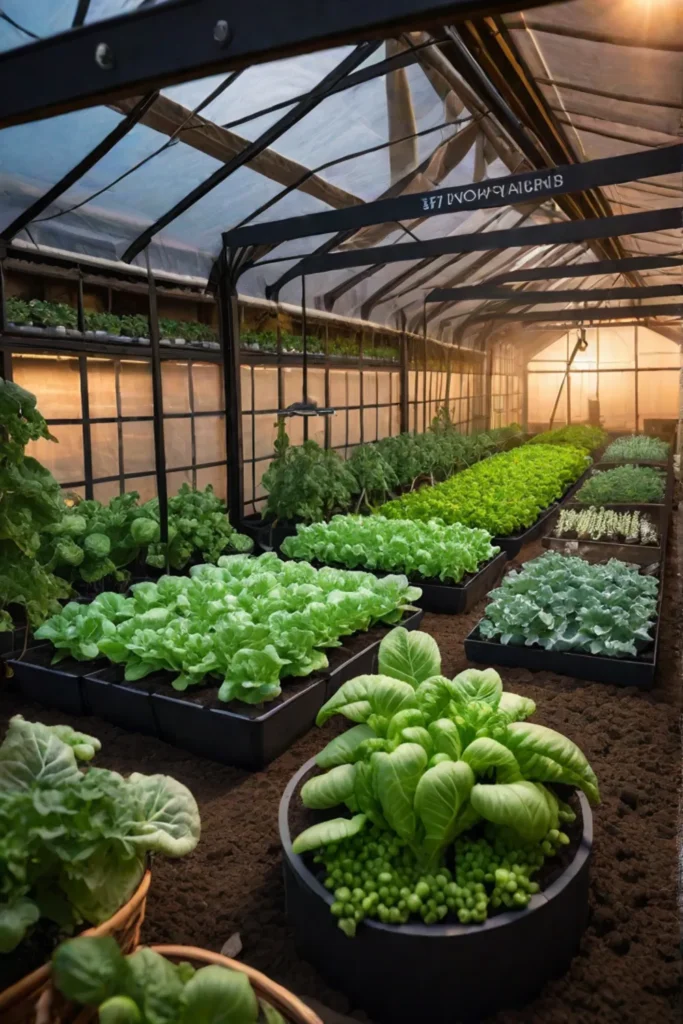
No matter your route, the key is to get those veggies in the ground at the right time for your climate. With some planning and attention, you’ll be well on your way to a bountiful harvest!
Maintaining the Garden
Congratulations, your vegetable garden is officially planted and ready to grow! But the work isn’t quite done yet. Ongoing care and maintenance are essential for keeping your plants healthy and productive throughout the season.
Let’s start with one of the most crucial elements – water. Vegetables need consistent moisture, but not too much. Overwatering can lead to disease and root rot, while underwatering will stunt growth and reduce yields. The key is to keep the soil moist but not soaked.
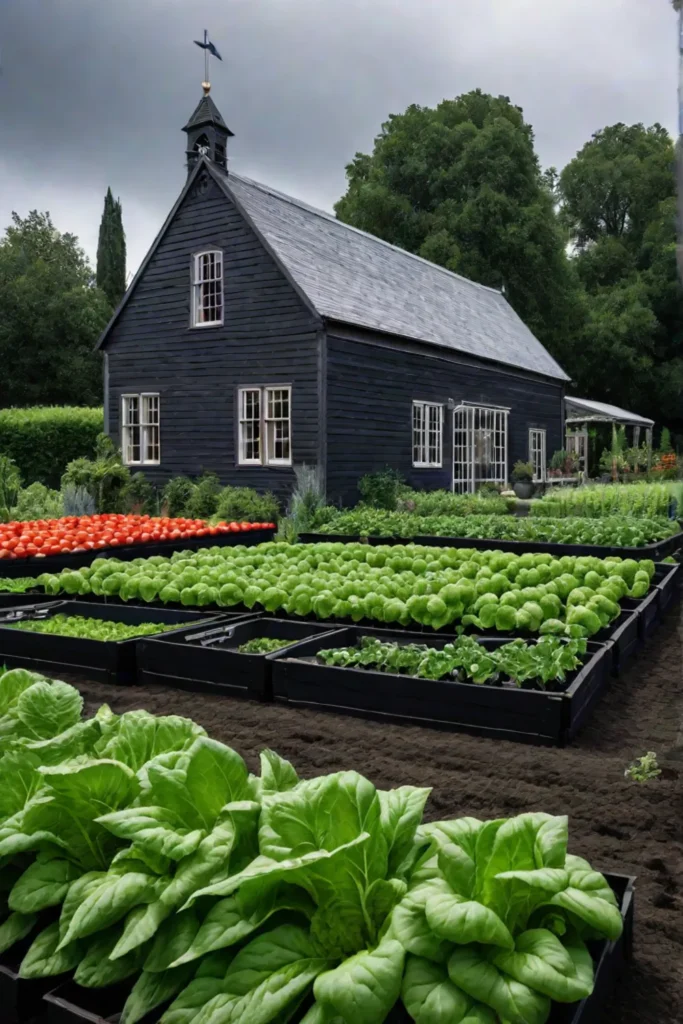
A good rule of thumb is to water your garden about 1-2 inches per week, adjusting as needed based on weather conditions. Early morning is the best time to water, as it reduces evaporation and gives the plants time to absorb the moisture before the day’s heat.
Next up, weeds. These pesky plants will compete with your veggies for nutrients, water, and sunlight, so you’ll want to stay on top of removing them. Hand-pulling is the most effective method to get the entire root system. Mulching around your plants can also help suppress weed growth.
Speaking of mulch, this magical material does wonders for your garden. A 2-3 inch layer of organic mulch like wood chips or shredded leaves helps retain soil moisture, moderate temperature fluctuations, and add nutrients as it breaks down. It’s a real game-changer!
Of course, no discussion of garden maintenance would be complete without addressing pests and diseases. The good news is that you can often avoid these issues by creating a healthy, balanced ecosystem in your garden. Companion planting, introducing beneficial insects, and using organic pest control methods are all effective strategies.
Remember to look for signs of stress or problems, like yellowing leaves or wilting plants. Addressing issues early on is key to keeping your veggies thriving.

With a little TLC and vigilance, your garden will reward you with a bountiful harvest all season long. Let’s move on to the final step – reaping the rewards of your hard work!
Harvesting and Storing Produce
Ah, the moment you’ve been waiting for – it’s time to start harvesting your labor’s fruits (or veggies?)! This is where all your hard work pays off, literally and figuratively.
Knowing when to harvest your vegetables is crucial for ensuring the best flavor, texture, and nutritional content. Pay close attention to your crops’ size, color, and texture, as these are the telltale signs of ripeness. For example, tomatoes should be fully red and slightly soft to the touch, while cucumbers are best picked when they’re 4-6 inches long and still firm.
When it’s time to harvest, use a sharp knife or pruner to carefully remove the vegetables from the plant. Avoid pulling or twisting, as this can damage the roots and stunt future growth. With delicate crops like leafy greens, snip the leaves at the base of the plant, leaving the roots in the ground.
Now, let’s talk storage. Proper handling and storage are key to maximizing the shelf life of your fresh produce. Tomatoes, for instance, should be kept at room temperature, away from direct sunlight. Peppers, however, do best in the fridge, stored in a plastic bag to maintain humidity.

Cucumbers and zucchini also benefit from refrigeration but be sure to wrap them in paper towels to absorb any excess moisture. This helps prevent them from becoming limp and soggy.
By harvesting at the right time and storing your veggies correctly, you can enjoy your garden’s fresh, flavorful bounty for weeks to come. And let’s not forget the incredible nutritional value of homegrown produce – it’s often far more nutrient-dense than what you’ll find at the grocery store.
So, go ahead and start planning delicious meals featuring your garden-fresh ingredients. You’ve earned it!
Extending the Growing Season
As the growing season winds down, you may wonder how to keep that veggie harvest going for as long as possible. Well, I’ve got good news – there are several techniques you can use to extend the life of your garden and enjoy a bountiful harvest for even longer.
One of the most effective methods is the use of cold frames. These simple, inexpensive structures act as mini-greenhouses, trapping heat from the sun and insulating the soil to create a protected microclimate. This allows you to get a head start on cool-season crops in the spring and keep them growing well into the fall.
For an even more robust season extension, consider investing in a greenhouse. While a bit more costly, a greenhouse provides more comprehensive climate control, allowing you to grow warm-weather veggies like tomatoes and peppers throughout winter. Just choose a design and size that fits your available space and budget.

Another clever trick is using row covers. These lightweight, breathable fabrics are draped directly over your plants, shielding them from frost and cold snaps. They’re a great, low-cost solution for protecting cool-season crops when temperatures dip.
Let’s not forget about succession planting—the art of sowing new crops in the same spot as you harvest the previous ones. This allows you to maximize your garden’s productivity and ensure a continuous fresh produce supply. Just be mindful of crop rotation to maintain soil health.
You can dramatically prolong your vegetable gardening season by employing a combination of these season-extending techniques. Imagine harvesting juicy tomatoes or crisp greens well into the fall – it’s a game-changer!
Conclusion
Well, there you have it, my friends – a comprehensive guide to planning and creating your thriving vegetable garden. We’ve covered all the essential steps, from selecting the perfect location to maintaining a healthy plot and extending your growing season.
Now, I know it may seem like a lot of work upfront, but trust me, it will be so worth it. Imagine strolling through your backyard, basket in hand, picking the freshest, most flavorful veggies imaginable. No more wilted greens or tasteless tomatoes from the grocery store – your homegrown goodies will burst with nutrients and flavor.
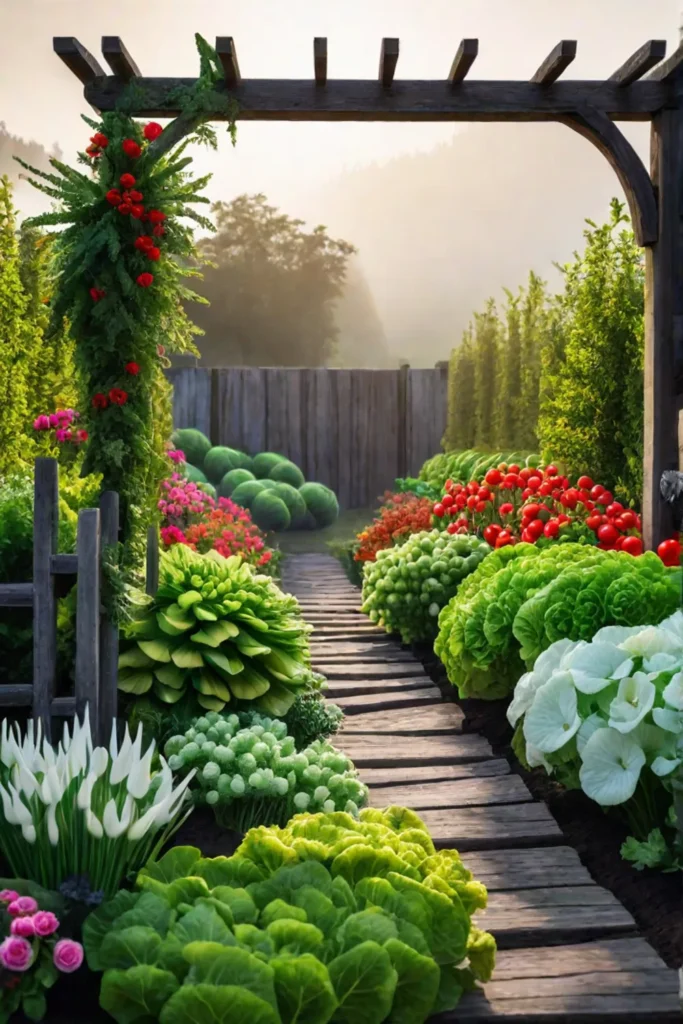
But the real joy comes from the process itself. There’s something so rewarding about nurturing your plants from seed to harvest and savoring the fruits (or veggies) of your labor. It’s a wonderful way to connect with nature, exercise, and enjoy a sense of accomplishment.
So, what are you waiting for? It’s time to roll up your sleeves and get growing! With a little planning and elbow grease, you’ll be well on your way to creating a thriving, bountiful vegetable garden that you and your family can enjoy for years.
Happy gardening, my friends!
